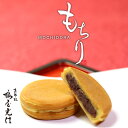Dictionary of Sushi Terms
This hand-made dish in Japan has long developed into an international trend. Sushi is sure to appeal to you whether you're a fan of it or simply don't understand why anyone would spend such a fortune on a dish of fish that isn't even cooked.

Knowing some useful sushi terms will enhance your experience as well as knowing how to eat sushi properly. If you've been planning to go to the nearest restaurant for sushi, it's a good idea to take a look at the "terms" presented below to know exactly what you'll be enjoying.
Sushi vs Sashimi
Although the term "sushi" is now used as a generic term for all types of sushi, it was originally used only for those with sticky rice rolls.
Newbies refer to all raw fish as sushi, although sushi also comes in cooked, veggie, and vegan varieties. Ingredients such as octopus, eel, and some other types of sushi are sometimes cooked to preserve texture.
The correct term for a piece of (usually raw) seafood that is thinly sliced and served without rice is sashimi.
Eat Sushi and Sashimi
People use chopsticks (preferably not disposable chopsticks) to eat sashimi and use their hands when eating sushi.
You should know some rules of using chopsticks to enjoy the most authentic sashimi. For example, pointing at an item with chopsticks and telling someone to try it or talking with a mouth full of food is rude.
Types of Sushi
- Maki: Maki means "roll" in Japanese. Maki refers to any type of sushi made by rolling makisu, the bamboo mat used to roll sushi. Maki rolls are usually cut into 6-8 pieces.
- Nigiri: A piece of sushi rice with a piece of fish glued on top. Sometimes it's sushi rice combined with octopus or eel. You can also roll a piece of seaweed to keep the fish stick to the rice. Nigiri should be eaten with the hands. If you want to dip soy sauce, dip the side with fish meat so that the rice doesn't come apart.
- Hosomaki: The smallest maki roll. There are fewer ingredients inside and just rolled with nori seaweed on the outside.
- Futomaki: The largest roll of maki, usually thinly sliced. Traditionally Japanese people eat futomaki whole rolled without cutting during Setsubun evening in some parts of Japan.
- Sashimi: Often confused with sushi, sashimi refers to slices of raw fish without rice. Sashimi is usually eaten with chopsticks, not with your hands.
- Temaki: Temaki is a cone-shaped sushi roll about four inches long wrapped from nori seaweed with rice and fish inside. People eat temaki like sushi but only on the go.
- Uramaki: Not a traditional or Japanese dish, the maki roll is "upside down" with seaweed wrapped in ingredients and a layer of rice on the outside. Sesame seeds and fish roe often stick to the rice when you eat it with your hands, so it looks a bit messy.
- Chirashi: Uncommon outside of Japan, chirashi is a bowl of sushi rice with a variety of sashimi and garnishes.
Sushi terms you need to know
- Nori: Dried seaweed, both black and green, used to roll sushi. Once nori was shaved from the docks and sun-dried, today nori is mainly supplied by the farm.
- Roe: Caviar placed on top of sushi to add color, texture, and saltiness. Roe is used from a variety of fish, especially flying fish (tobiko) and sea urchins (porcupine).
- Hashi: Japanese word for chopsticks. Chopsticks are used to eat sashimi; Other types of sushi should be eaten by hand.
- Makisu: Bamboo mat used to roll makizushi.
- Kaiten Zushi: Known as the “sushi train” or the “conveyor belt,” these restaurants allow diners to choose what they want from the plates on the conveyor belt. The discs usually have their own color depending on the type of rack for identification. The first conveyor belt sushi restaurant opened in Japan in 1958.
- Itamae: The title for a professional sushi chef. Sushi chefs are respected like artists
Main Ingredients for Sushi
The main ingredient in a piece of sushi, especially nigiri, is called neta.
- Maguro: Tuna (various words for species and slices).
- Toro: The fattest part of fish, usually tuna; it is usually the most expensive and most called part.
- Hamachi: Stingray
- Kurodai: Red snapper
- Saba: Mackerel (usually sliced with some skin on it and used as sashimi).
- Sake: Salmon. Synonyms of sake but pronounced slightly differently "sha-keh". Salmon was used as a sushi ingredient in Japan by a Norwegian businessman in the 1980s!
- Unagi: Freshwater eel; anago is a sea eel. Unagi is usually grilled and drizzled with a sweet sauce.
- Tako: Octopus
- Ika: Squid
- Ebi: Shrimp
- Kani: Crab (real crab, not fake crab surimi)
- Hotate: Scallop
- Kaki: Oysters
- Uni: Sea Urchin
- Mirugai: Clam (1 type of clam)
- Awabi: Abalone
- Tamago: Eggs, tamagoyaki are square pieces of eggs on top of sushi rice.
- Surimi: crab/fish stick.
Served with Sushi
- Wasabi: Spicy green condiment served with sushi. Original Japanese wasabi is difficult to maintain and very expensive, so horseradish is often used instead. Wasabi was originally used as an antibacterial ingredient for raw fish. Sushi chefs have added the exact amount of wasabi to each dish, so adding a lot of wasabi in a fancy restaurant might be seen as impolite.
- Gari: Ginger, pickled ginger is used with sushi. Gari is used to clean up the flavor between servings of sushi. Ginger also aids digestion and helps kill bacteria in raw fish. Never eat ginger with sushi!
- Daikon: Not to be confused with ginger, daikon is a mildly flavored white radish that is often used for crunchier dishes. Daikon soaked in Japanese is called takuan.
- Edamame: Young soybeans, steamed or boiled in molds, often served as a snack to accompany sushi.
- Sake: Correctly pronounced sake, not sah-keh. Fermented rice wine can be drunk hot or cold. Sake can have an alcohol content as high as 20%. As a thank you for an authentic sushi meal, you can invite the chef to drink with you a glass of sake.
- Agari: Green tea. Mecha is a good dish with a slightly spicy and bitter taste that is used to remove odors.
-------------------
Injavi.com - Visit Japan | Visit in Japan
Guide to living, studying and working in Japan
Related Products






































































































